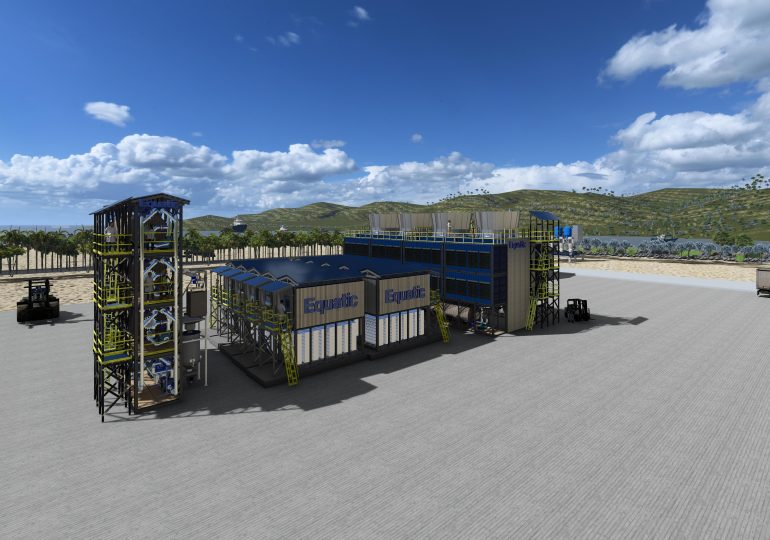The Equatic Process, a novel carbon removal technology and one of the best inventions of 2023, is getting a major scale-up, with the world’s largest ocean carbon dioxide removal (OCDR) facility set to be built in Singapore and operational by 2025—sparking optimism for what has been hailed as a potential game changer for global climate efforts after scientists agreed in 2022 that atmospheric carbon-removal technology will be necessary for the world to reach its climate goals.
[time-brightcove not-tgx=”true”]
Scientists say that the world would need to remove at least five billion metric tons of carbon by 2050 to keep global warming at safe levels, and investors and inventors have been racing to figure out how to meet that demand.
On Tuesday, Singapore’s national water agency PUB announced that it was furthering its collaboration with the University of California in Los Angeles and Equatic, a Los Angeles-based startup founded by UCLA scientists. Together, they plan to build a $20 million plant that removes 3,650 metric tons (4,000 tons) of carbon dioxide from the ocean every year through the Equatic Process, which uses electrolysis to convert carbon dioxide in seawater into stable solids.
The extracted carbon dioxide is stored in the form of solid calcium and magnesium-based materials—similar to how seashells are naturally formed—“for at least 10,000 years,” according to a press release published on Tuesday by the UCLA Samueli School of Engineering. And the treated seawater that is pumped back into the ocean would then have the capacity to absorb even more carbon dioxide from the atmosphere. (Seawater holds nearly 150 times more carbon dioxide than air per unit volume, and oceans have been hailed as one of humanity’s biggest natural allies in the fight against the climate crisis.)
The project, named Equatic-1, is an expansion of a pilot program consisting of smaller plants set up in Singapore and the Port of Los Angeles last April—which each extract around 100 kilograms (0.1 tons) of carbon dioxide every day.
And it’s meant to be just the beginning of an even bigger expansion. “Once this facility has successfully fulfilled its technical demonstration objectives, Equatic will scale and commercialize the technology globally,” said the UCLA press release, which also noted that Equatic-1, when functioning at full capacity, will be able to remove the equivalent of 850 people’s annual carbon dioxide emission.
Read More: The Ocean is the Next Frontier for the Carbon Removal Industry
Advocates of the Equatic Process and other ocean carbon dioxide removal technology say that such processes would be a big boost for the global fight against climate change. But the technology has also been met with apprehension by some scientists who are concerned about its potential ecological risks and who urge more research and investment into OCDR to better understand both its benefits and dangers.
Pang Chee Meng, PUB’s chief engineering and technology officer tells TIME over email that the the processed seawater is neutralized before being discharged back into the ocean, to “ensure that the ocean chemistry is preserved,” adding that the agency and Equatic will closely monitor the environmental impact of the plant.
The operation of Equatic-1 will generate carbon credits, which will be distributed among PUB, Singapore’s National Research Foundation, and the UCLA Institute for Carbon Management, according to their proportion of funding. Meanwhile, Equatic has entered into agreements with several companies, including Boeing, for the purchase of carbon credits from its future commercial plants.
The plant is a significant part of Singapore’s goal to reach net zero emissions by 2045, but it could have other benefits, too. PUB also said that it would continue researching the potential of integrating the carbon removal technology into the country’s existing desalination processes. The Southeast Asian island already runs major desalination operations, an energy-intensive process that removes salts and minerals from seawater to make it drinkable, and a key pillar of the country’s water security strategy.
“This could prove a game changer in shaping the future operations of desalination plants not just in Singapore, but across the world,” says Pang.
PUB also says that they are currently exploring the potential for the solid carbonates produced by the Equatic Process to be used in the construction industry, such as for cement or concrete. And hydrogen, another by-product of the Equatic Process, may be used to power the process itself, the agency adds, or used as a clean energy source to produce electricity.
Leave a comment








